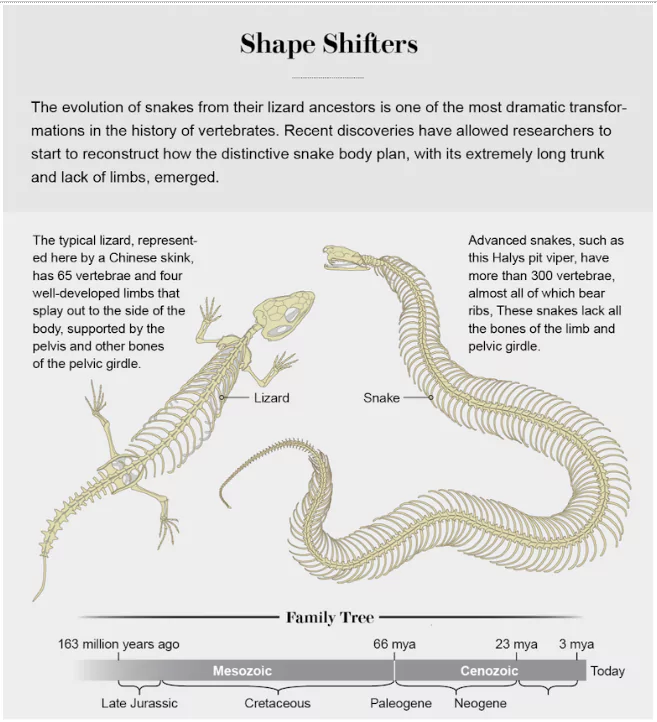Context:
Recently, in a study published in the Journal Science,a team of biologists from the University of Michigan examined snakes’ genetic and dietary habits.
Understanding the Evolution: Snakes’ Swift Genetic Changes and Dietary Specialization
- Researchers decoded the genetic sequence of more than 1,018 snake and lizard species.
- Revealed that snakes have undergone significantly faster evolution compared to their reptilian cousins (Lizards).
- Dietary preferences by studying the stomach contents of more than 60,000 snakes and lizards,
- Snakes (specialized their food selection) largely consume small vertebrates while lizards( non-specific) prefer insects and invertebrates.
- The study also noted that the Snakes‘ moving methods, and perceptions underwent significant alterations.
Evolution of Organisms :
- According to Darwinian Theory of Natural Selection,
- Organisms inherit small changes over many generations and these changes collectively enhance the organism’s ability to compete, survive, and reproduce.
- Through Genetic sequence, Scientists determined the evolutionary distance between Various Organisms.
|
Evolutionary Changes in Lizards-Snake:
- Lizards split to legless Species : A group of lizards split apart around 100 million years ago, becoming a legless species.
- Acquired flexible skulls to swallow their prey whole.
- Sonic Hedgehog gene : Due to disruption in this gene, limb growth variation in different varieties of snake can be seen.
- Along with snakes, many lizards also adapted to these rapid changes and developed snake-like traits, including losing their limbs and elongating their bodies.
- The Australian scincid lizard (Lerista), a member of the clade Squamata (which includes lizards and snakes), provides perhaps the best example of such evolution.
- The Singularity of Snakes : Similar to the Big Bang theory in cosmology, which suggests the universe originated from a singular event approximately 14 billion years ago, the singularity of snakes proposes a comparable concept.
- In a bid to adapt, lizards made fervent efforts to evolve, yet snakes surpassed them effortlessly. This led to a remarkable burst of diversification. Researchers have coined this phenomenon as the “singularity of snakes”.
- This singular event marked a rapid succession of changes in form and function among snakes, appearing as a unified event on the evolutionary timeline.
- Snake Diversity : After that, snake diversity increased to the point that there are currently close to 4,000 different species of snakes on Earth.

Conclusion:
Scientists suspect such evolutionary bursts in some species may have happened multiple times, not just once, and are certain that understanding them is key to understanding the earth’s ecological future.
News Source : The Hindu
![]() 4 Mar 2024
4 Mar 2024

